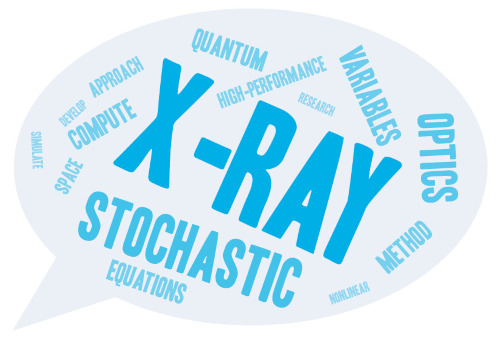High-Performance Computing for Nonlinear Wave Propagation of High-Intensity X-Ray Pulses

High-Performance Computing for Nonlinear Wave Propagation of High-Intensity X-Ray Pulses
Supervisors: Prof. Nina Rohringer (DESY, UHH), Dr. Nils Margenberg (HSU), Prof. Markus Bause (HSU)
The doctoral researcher will develop high-performance computing software to simulate the nonlinear propagation of high-intensity X-ray pulses through matter. This project is motivated by our experimental activities at X-ray free-electron laser sources, where we explore fundamental quantum optical processes, such as superfluorescence, superradiance, X-ray optical frequency mixing, optically induced transparency, lasing without inversion, and X-ray Raman scattering.
In a recently established theoretical and numerical framework, the interaction of few-level quantum emitters with the quantized X-ray field is modeled. This approach uses stochastic phase-space sampling of the many-body Liouville space, mapping creation and annihilation operators onto dynamic variables governed by equations akin to semiclassical Bloch equations. By incorporating tailored stochastic noise, the method captures quantum effects. In this project, a conceptually novel approach will be considered, opening new horizons for simulating stochastic coupled partial differential equations on modern high-performance computing architectures, with the goal of fully exploiting the tremendous compute power of these systems. The approach will be based on a uniform treatment of all variables involved (space, time, and stochastic variables) using variational principles. Galerkin discretization techniques using finite element methods for the discretization of deterministic partial differential equations in space and time are extended in a natural way to the stochastic variables, referred to as stochastic Galerkin methods. Efficient solution methods for the arising nonlinear and linear algebraic systems on tensor-product finite element meshes become feasible by interpreting the stochastic variables as additional dimensions of a tensor-product structured mesh.
Successful code developments in an open-source C++ environment will enable studies of inner-shell X-ray lasing without inversion and X-ray optical wave mixing. The candidate will also have opportunities to design novel experiments in fundamental X-ray quantum optics and participate in related experimental activities within a collaborative environment. This position offers a vibrant research experience at the forefront of X-ray science and high-performance computing.
Requirements:
- Master's degree (or equivalent) in computational physics, theoretical physics, or applied mathematics (or related degree)
- programming skills and languages: C++ (desirable) and Python
- experience in
- electrodynamics and quantum mechanics
- mathematical physics
- stochastic partial differential equations (desirable)
- numerical methods for partial differential equations (desirable)
- high-performance computing (desirable)
Position:
- Deutsches Elektronen-Synchrotron DESY
- 75% EGR. 13 (TVöD) position for three years
At DESY, gender equality is an important aspect. To support work-life balance, we offer flexible working hours, variable part-time, job-sharing models, and participation in mobile work (up to 50%).
DESY promotes equal opportunities and diversity. The professional development of women is very important to us. Therefore, we strongly encourage women to apply for the vacant position.
Applications from severely disabled persons will be given preference if they are equally qualified (sbv.desy.de).